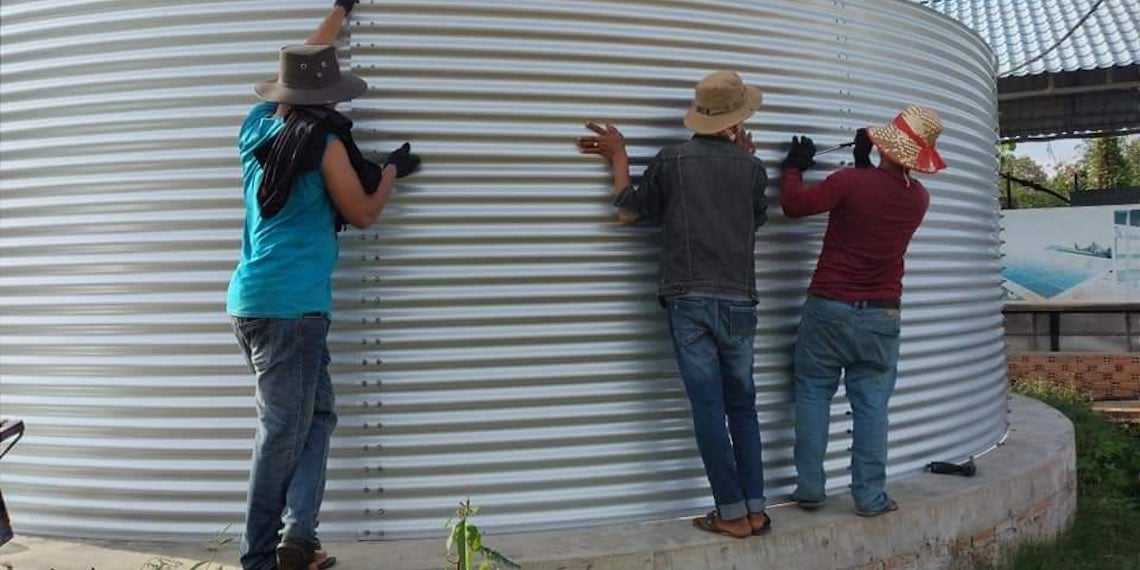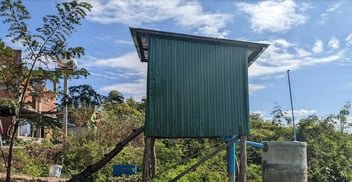Sanitation and drinking water access the focus on World Toilet Day

World Toilet Day — 19 November 2021 — aims to raise awareness of the 3.6 billion people living without access to safely managed sanitation and the 2.2 billion people who do not have safely managed drinking water services.
To help reduce these numbers and increase access to safe water, the Australian Water Association’s international program is working in partnership with water utilities and governments in Vietnam, Cambodia, Indonesia and Laos.
Over the past two years, the AWA has facilitated knowledge sharing activities between Australian water experts and Cambodian private water operators to assist in developing drinking water services in regional areas under the Australian government-funded Investing In Infrastructure (3i) program.
South East connections in South East Asia
AWA International Project Lead Josh Quinn said the utility twinning program, which has been running with Vietnam for many years now, was established in Cambodia in 2019.
“One Australian utility has been partnered with three Cambodian private water operators. It started with South East Water helping Cambodian water operators determine what help they needed most and how South East Water could best add value,” he said.
“In terms of areas of focus, they identified non-revenue water, asset management and protection, and water quality optimisation during their initial study tour, knowledge sharing site visits and action planning.”
Following this initial study tour, South East Water hosted a group of Cambodian water professionals to demonstrate the methods used by a Melbourne metropolitan utility to manage non-revenue water, asset protection and water quality in providing the 24-hour service of safe drinking water.
“They also took them across to Melbourne Water, who manage large water storages and dams, to provide more context to the Cambodian water professionals of the amazing work and effort performed by the Victorian sector in delivering safe drinking water from catchment to tap,” Quinn said.
An ongoing partnership
South East Water went back to Cambodia at the end of 2019, attended the annual Cambodian water conference, and began work with the partnered Cambodian water providers to improve operational and treatment processes using the same methods and strategies introduced on the inbound study tour.
“They installed analog-to-digital flow meters on two of the private water operator treatment plant outlets, so that they could monitor usage online to determine if there are any leaks in their system,” Quinn said.
“They also tackled water quality optimisation whereby the South East Water team helped assess and improve the chlorine disinfection process to help make the water safer before distribution, and find ways to further optimise the process.”
Further to the twinning program, the AWA has also facilitated technology demonstrations within Cambodia, with Australian drinking water treatment technology companies being partnered with regional private water operators to pilot technology for safer drinking water.
The technology demonstration partnerships, which were funded by the Australian Government through the $49 million 3i program, have involved Dupont Australia, Tiger Water Solutions, Water Environment (W.E) Venture Co., Ltd, the Cambodian Water Supply Association, 3i Group and Australian Aid.
“One of the major focuses of Investing In Infrastructure is to expand the reach of essential infrastructure to Cambodians,” Quinn said.
“With all of the technology demonstrations we’ve done in Cambodia, the focus has been on monitoring and evaluation to compare performance of Australian technology to the existing systems being used in Cambodia.”
Remote management
One of the biggest trials was the installation of a DuPont Memcor Ultra Filtration membrane unit and an above ground steel tank manufactured by Tiger Water Solutions in Prek Chik Commune, Moung Ruessey District, Battambang Province, which was all managed remotely and without travel.
“It’s a small-scale, 100,000 litre capacity system. It’s being fed the same water supply as the existing sand filter treatment plant, which is the technology widely used throughout Cambodia to remove suspended sediment and pathogens,” Quinn said.
“They’re passing water through the ultrafiltration membrane, which enables the removal of significantly more pathogens from the water. While the above-ground steel tank is being used as a settling tank, catching suspended solids before the supply enters the membrane unit.
“Other technology demonstrations included an oxidation catalytic media technology, which is primarily purposed in Australia to remove iron and manganese from water and is exclusively manufactured in WA by Quantum Filtration Medium, but it also performs really well in terms of removing turbidity, which is a huge problem for Cambodian private water operators.
“That was piloted at Tbeng Kpos Water Supply in Ra Village, Tbeng Kpos Commune, Samaki Meanchey District, Kampong Chhnang Province to demonstrate its performance in comparison to its sand filtration system.”
Quinn said that while COVID-19 has restricted the Australian partners from returning to Cambodia to fully quantify the benefits of these pilots, the in-country partners are still pushing ahead with the evaluation activities and everyone is looking forward to continuing with the program in person next year.
“Although it’s still early days in the monitoring and evaluation process, we are excited about the potential outcomes and benefits,” he said.
“We do already know that the water quality being produced is of better quality than what was being provided previously, meaning that the Australian Water Association and its members are contributing to the Royal Government of Cambodia and the Australian Government’s objective of increased access to safe, reliable, and affordable water services in Cambodia.”


